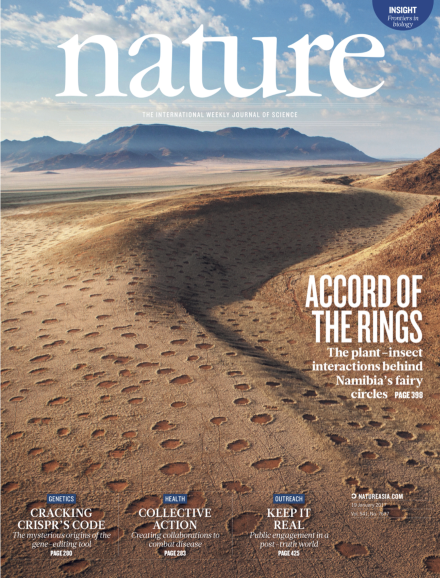Volume 541 Issue 7637, 19 January 2017
Editorial
World View
Research Highlights
Seven Days
News
News Feature
Comment
Correction
Books & Arts
Correspondence
Obituary
News & Views
Introduction
-
Frontiers in biology
Insight:

